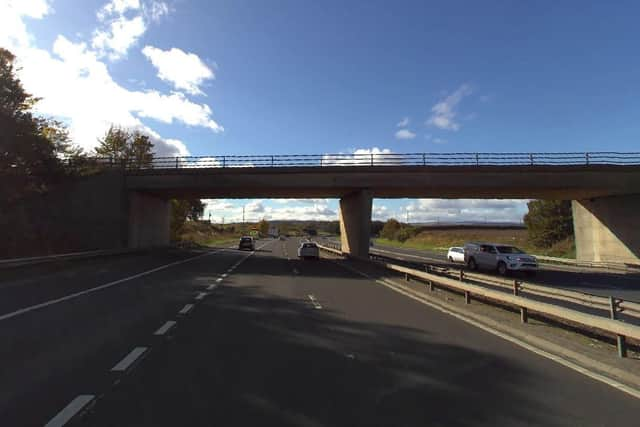Falkirk travel: M9 Kinnaird bridge upgrade completed
and live on Freeview channel 276
The work, funded by Transport Scotland, saw the bridge that carries the eastbound M876 over the M9 at Junction 8 Kinnaird Interchange upgraded.
It took nine months to complete the project.
Hill Overbridge is a two-span structure that comprises continuous steel beams supported on reinforced concrete piers and abutments. The mechanical bearings supporting the steel beams had reached the end of their design life and needed to be replaced. The safety barriers in the verges below the structure were replaced at the same time.


Advertisement
Hide AdAdvertisement
Hide AdBEAR Scotland, Transport Scotland’s operating company, has successfully replaced all 18 bearings with new mechanical bearings designed to current standards.
The process of replacing the bearings involved the installation of temporary jacks to lift the bridge deck up, with the highest loaded jack having to carry approximately 270 tonnes while the old bearings were removed and new ones installed.
With significant scaffold access in place, the opportunity was also taken by BEAR Scotland to carry out concurrent maintenance work including concrete repairs and repainting of the steel beams.
Chris Tracey, BEAR Scotland South East Unit Bridges Manager, said: “The completion of this project ensures the long-term serviceability and safe use of the structure.
Advertisement
Hide AdAdvertisement
Hide Ad“It is worth noting that the works were completed with minimal disruption to traffic during the extended construction period. Aside from the occasional overnight closure of the M876, while lifting and lowering the bridge deck, and the occasional closure of the M9 to facilitate changes between traffic management phases, two lanes of traffic were maintained as much as possible.”
